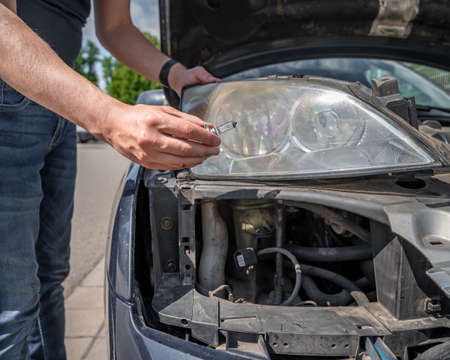Understanding the Indian Used Car Market
The Indian used car market is a dynamic and rapidly evolving sector, shaped by distinctive buyer preferences, regional trends, and price sensitivity. Unlike many Western markets, Indian buyers often prioritise value for money, reliability, and low maintenance costs over luxury features. This preference results in high demand for popular models from brands like Maruti Suzuki, Hyundai, and Honda, which are known for their durability and affordable service. Regional factors also play a crucial role: for instance, hatchbacks dominate in metropolitan cities due to traffic congestion and limited parking, while SUVs and MUVs are more popular in semi-urban and rural areas where road conditions may be challenging. Additionally, price points vary significantly across regions; vehicles in Tier 1 cities tend to fetch higher resale values compared to those in smaller towns, influenced by local demand and purchasing power. Understanding these unique aspects is essential when creating used car ads tailored for the Indian audience. Highlighting region-specific features—such as fuel efficiency for city dwellers or robust suspension for rural buyers—can make your advertisement stand out. Furthermore, transparency about service history and ownership details is highly valued among Indian customers, as trust remains a key factor in the pre-owned vehicle segment. By aligning your ad content with these market insights, you enhance your chances of attracting serious buyers and achieving a faster sale.
Crafting an Attention-Grabbing Headline
When it comes to selling your used car in India, the headline of your ad plays a crucial role in attracting potential buyers. A well-crafted headline not only grabs attention but also sets the right expectations. Here are practical tips for writing catchy and relevant ad headlines tailored to Indian audiences:
Tips for Writing Effective Headlines
- Use Popular Indian Terms: Incorporate commonly used phrases like “well-maintained,” “single owner,” “doctor-driven,” or “first-hand” to instantly connect with local buyers.
- Mention Car Model Details: Specify the brand, model, year, and variant (for example: Maruti Suzuki Swift VXI 2018). Buyers often search using these keywords.
- Add Emotional Appeal: Use words that evoke trust and reliability such as “family car,” “low mileage,” or “ready for long drives.” This resonates with Indian families looking for value and dependability.
Examples of Catchy Indian Used Car Headlines
| Headline Example | Key Elements Highlighted |
|---|---|
| Single Owner Honda City 2016 – Doctor Driven, Showroom Condition | Ownership, profession, model/year, excellent condition |
| Maruti Alto K10 2019 – Low Mileage, Perfect Family Car | Model/year, mileage, family-friendly appeal |
| Toyota Innova Crysta ZX – Ready for Road Trips, Well Maintained | Variant, lifestyle appeal, maintenance status |
| Swift Dzire VDI – First-Hand, Genuine Buyers Only! | Ownership status, exclusivity for serious buyers |
Pro Tip:
Avoid generic headlines like “Used Car for Sale.” Instead, be specific and highlight what makes your car special in the Indian context. The right headline can make your listing stand out in crowded online marketplaces and classified ads.

3. Highlighting Key Features and Selling Points
When creating an eye-catching used car ad for the Indian market, it is crucial to focus on features that genuinely matter to local buyers. Indian consumers are highly practical and make purchase decisions based on value-for-money aspects, long-term cost savings, and reliability. To maximise your chances of a quick sale, ensure your ad clearly highlights the following key selling points:
Mileage and Fuel Efficiency
Mileage is often the first detail potential buyers in India look for. Indians typically prefer cars with higher fuel efficiency due to rising fuel costs and frequent city commutes. Clearly mention your car’s mileage (in kilometres per litre or kmpl), both city and highway figures if possible, and emphasise any technology such as hybrid systems or fuel-saving features.
Service History and Maintenance Records
Trust is paramount in the used car market. Include a summary of your car’s service history—mention regular maintenance at authorised service centres, availability of service records, recent major repairs or replacements (like battery or tyres), and whether the car is still under warranty. Uploading scanned copies or photographs of these records can add further credibility to your listing.
Fuel Type
With India’s diverse geography and varying fuel prices, buyers may have preferences for petrol, diesel, CNG, or even electric vehicles. Clearly state the fuel type of your car and highlight advantages—such as lower running costs for CNG or convenience for petrol cars in urban areas. If your vehicle is BS6-compliant or has low emissions, mention this as well to attract environmentally conscious buyers.
Ownership Details
Indian buyers often check how many times a car has changed hands. First-owner vehicles are generally preferred due to perceived better care and less paperwork hassle. Specify whether you are the first owner or otherwise, and mention if all documents (RC book, insurance, PUC) are up-to-date and available for verification.
Additional Selling Points
- Accident-Free Status: Confirm if your car has never been involved in any major accidents.
- Upgrades & Accessories: List any additional features like alloy wheels, infotainment systems, reverse cameras, or seat covers that add value.
- Insurance Validity: Mention remaining insurance period and type (comprehensive/third-party).
Pro Tip:
Present information in bullet points for quick scanning. Use simple yet persuasive language familiar to Indian buyers—terms like “well-maintained,” “single owner,” “low running,” or “family-used” resonate well in local contexts.
4. Photographs that Make Your Car Stand Out
In the Indian used car market, high-quality photographs are often the first step to attracting serious buyers. With diverse environments and lighting conditions across India, capturing clear and appealing images requires a tailored approach. Below are best practices for taking standout car photos in Indian settings, as well as common mistakes to avoid that can turn off potential local buyers.
Best Practices for Eye-Catching Car Photos
| Tip | Description |
|---|---|
| Select the Right Location | Avoid cluttered backgrounds like busy streets or crowded parking lots. Opt for open spaces such as residential areas, quiet roads, or near parks. This makes your car the focal point and conveys trustworthiness. |
| Use Natural Lighting | Shoot during early morning or late afternoon (the “golden hour”) to avoid harsh sunlight and shadows common in Indian afternoons. Soft light enhances paint color and minimizes glare. |
| Clean the Car Thoroughly | Wash your car inside and out before photographing. Indian weather can be dusty; a sparkling clean car signals good maintenance to buyers. |
| Show Multiple Angles | Capture front, back, both sides, interior, dashboard, boot space, tyres, and engine bay. Comprehensive coverage builds confidence among Indian buyers who value transparency. |
| Highlight Unique Features | If your car has added accessories (alloys, infotainment systems, seat covers), showcase them clearly. Indian buyers often look for these upgrades. |
| Avoid Obstructions | Remove personal items and avoid people in the frame. Ensure number plates are visible but not obscured by reflections or dirt. |
Common Photo Mistakes That Deter Indian Buyers
- Poor Lighting: Overexposed or underexposed shots make it hard to assess condition. Avoid night-time or direct noon sun photos.
- Crowded Backgrounds: Markets, roadside vendors, or busy traffic can distract from the cars features and look unprofessional.
- Blurry Images: Use a steady hand or tripod; shaky images reduce buyer trust.
- Lack of Detail: Only showing exterior misses concerns about interiors or engine health—details matter in India’s value-conscious market.
- Editing Excessively: Over-filtering may make buyers suspicious about hidden flaws. Keep edits natural and minimal.
Pro Tip: Mobile Camera Settings for Indian Sellers
If using a smartphone—a common practice in India—set the camera to high resolution, use HDR mode for balanced exposures, and wipe the lens before shooting for extra clarity.
Remember: Good photographs bridge the gap between online listings and real-world inspections. Investing time in capturing your car effectively can significantly speed up your sale process and help you stand out in India’s competitive used car market.
5. Writing a Persuasive Description in Indian English
Use Local Phrases to Build Connection
When writing your used car ad for the Indian market, using local expressions and familiar phrases can make your listing feel more relatable. For example, instead of simply saying “well-maintained,” you could mention “ghar ki gaadi” (family car) or “single-handedly driven” to communicate trustworthiness. Highlight features with phrases like “AC chilling hai” or “engine bilkul fit hai” which are commonly understood and build comfort with buyers.
Keep Language Simple and Clear
Avoid complicated jargon or overly technical language that might confuse potential buyers. Stick to straightforward terms such as “low mileage,” “no major accidents,” or “recently serviced.” Simple descriptions ensure that your message reaches a wider audience, including first-time buyers and those not familiar with automotive terminology.
Be Transparent and Honest
Trust plays a big role in the Indian used car market. Clearly mention any minor scratches, repairs, or replacements done on the vehicle. Statements like “minor dent on left door, see photo” or “battery changed last year” help set the right expectations and prevent unnecessary negotiations later. Transparency demonstrates your integrity as a seller.
Mention Important Documentation
Indian buyers look for proper papers before committing to a deal. Specify if you have the RC (Registration Certificate), insurance copy, PUC (Pollution Under Control) certificate, and service records ready. A line such as “All documents up to date, transfer-ready” boosts buyer confidence significantly.
Highlight Unique Selling Points
If your car has features like new tyres, music system, CNG kit, or is non-accidental, mention these clearly. Use phrases popular among Indian audiences: “tyres brand new,” “music system mast hai,” or “CNG fitted for better savings.” This increases your ad’s appeal and sets it apart from generic listings.
6. Selecting the Right Platforms for Maximum Reach
When selling your used car in India, choosing the correct online platforms is crucial to ensure your ad reaches a broad and relevant audience. The Indian market is unique, with several popular online classifieds and mobile apps that cater specifically to local buyers. Here’s how you can maximise your reach and boost your chances of a quick sale.
Overview of Leading Online Classifieds and Mobile Apps
OLX: This is one of the most widely-used platforms for buying and selling used cars in India. OLX offers an easy-to-use interface, filters by location, brand, and price range, making it simple for potential buyers to find your vehicle.
CarDekho: A trusted name in the automotive space, CarDekho allows sellers to list their cars with detailed specifications and photos. It attracts serious car buyers who are actively looking for well-maintained vehicles.
Quikr: Another popular classified site, Quikr provides excellent visibility through its large user base spread across India’s metros and smaller cities.
Facebook Marketplace: With millions of Indian users, Facebook Marketplace is ideal for connecting with hyper-local buyers. The platform also allows direct communication via Messenger, which makes negotiations faster.
CARS24: Although more focused on car inspection and instant sales, CARS24 has become a go-to app for many urban sellers seeking hassle-free transactions.
Advice on Posting Frequency
To keep your listing visible and attract maximum attention, it’s advisable to refresh or repost your ad every few days, especially during weekends when buyer activity peaks. Some platforms offer paid options to ‘bump’ or ‘feature’ your ad—consider using these services if you want quicker results in competitive markets like Mumbai, Delhi NCR, or Bangalore.
Response Strategies: Timeliness & Professionalism
Promptly respond to all inquiries—Indian buyers often move quickly when they spot a good deal. Use polite language and be clear about your availability for test drives or inspections. If you receive multiple queries, keep track of potential leads using WhatsApp or SMS, as these are widely preferred communication tools in India.
Always be transparent about the vehicle’s condition to build trust. If you’ve posted on more than one platform, mention this politely to interested buyers so they know there may be competition.
Local Insights for Greater Success
Cater your communication style and timings according to regional preferences—for example, evening calls may work better in South India while morning follow-ups can be more effective in North India.
Selecting the right platform, posting regularly, and maintaining responsive communication will help you stand out among other used car ads and secure a successful sale in the vibrant Indian market.
7. Ensuring Transparency and Building Buyer Trust
When creating a used car ad in India, transparency is not just good practice—it is essential for building buyer trust and ensuring a smooth transaction. Indian buyers are generally cautious and value honesty, especially when making significant purchases like cars. By following transparent practices, you can set your listing apart from others in the crowded marketplace.
The Value of Honesty in Listings
Be upfront about your vehicle’s condition, including any scratches, dents, or mechanical issues. Clearly mention the reason for selling the car, as this is a common question among Indian buyers. Avoid exaggerating features or concealing faults; instead, use truthful descriptions to establish credibility from the start.
Service History Documents Matter
Maintaining and sharing your car’s service history records adds great value to your ad. Buyers in India often request these documents to verify that the vehicle has been regularly maintained. Upload scanned copies of service bills or provide details about recent repairs and replacements. This transparency reassures potential buyers and helps justify your asking price.
Completing RTO Paperwork
Proper documentation is crucial in India’s used car market. Make sure to mention that all RTO (Regional Transport Office) paperwork is complete and available—this includes Form 29 & 30 for ownership transfer, valid insurance papers, and PUC (Pollution Under Control) certificate. Highlighting these details in your ad demonstrates professionalism and readiness for a hassle-free sale.
Polite Communication: An Indian Norm
Indian culture places high importance on polite and respectful communication. Respond promptly to enquiries using courteous language such as “Sir/Madam,” “Kindly,” or “Please.” Address concerns patiently, provide clarifications without hesitation, and be open to negotiation in a friendly manner. A positive tone not only enhances your reputation but also increases the likelihood of closing a successful deal.
In summary, honest disclosures, well-organized documents, complete RTO formalities, and culturally appropriate communication are key to winning the trust of Indian buyers. By integrating these practices into your used car advertisement strategy, you can create a transparent environment that encourages confident buying decisions.


